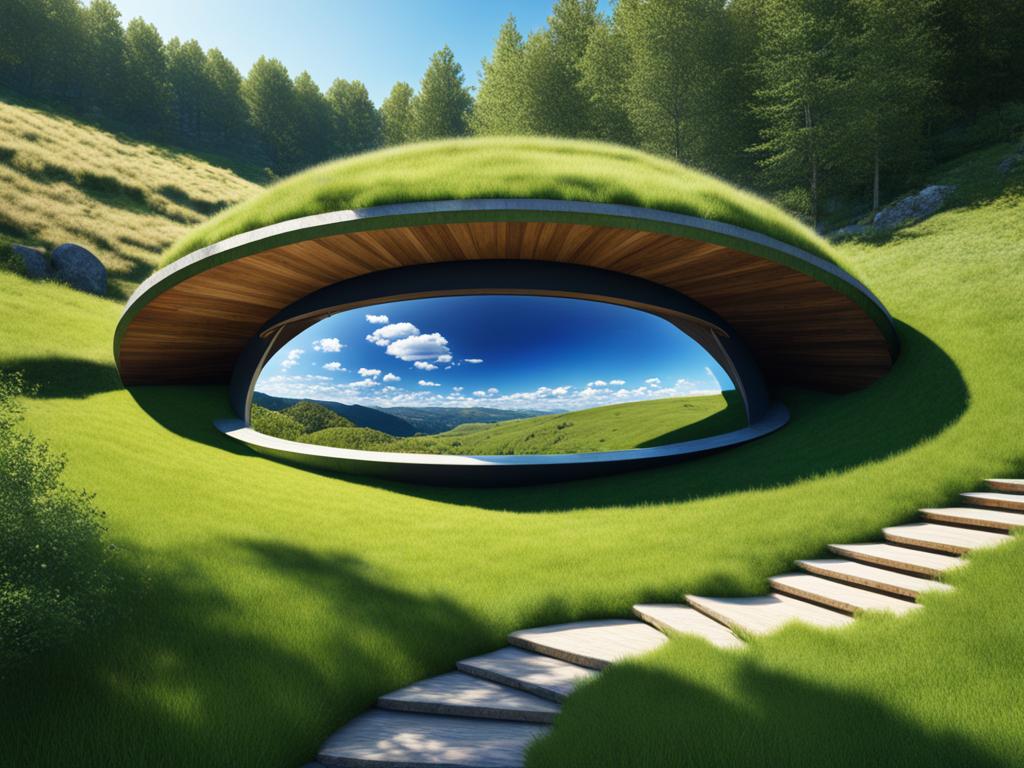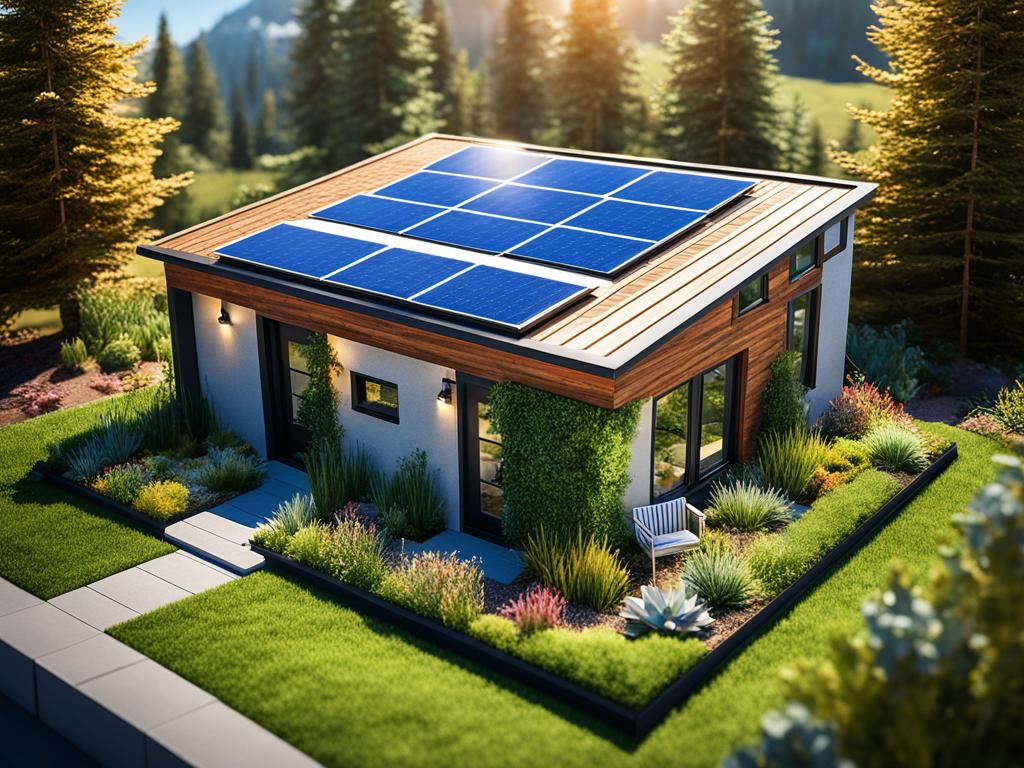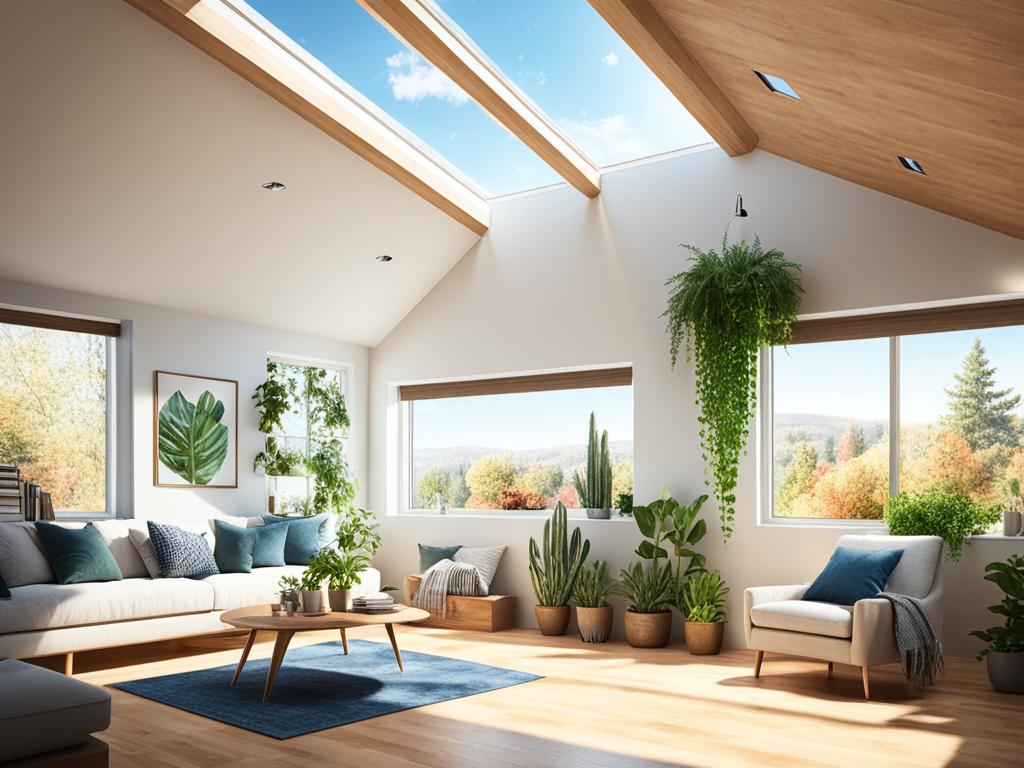Did you know that subterranean dwellings have been around for thousands of years? From ancient cave dwellings to modern underground homes, humans have embraced the idea of minimalistic underground living. Today, the concept of an underground tiny house is gaining popularity as people seek sustainable and energy-efficient housing solutions.
Key Takeaways
- Underground homes offer energy efficiency and protection from severe weather.
- Low upkeep, noise control, and low visibility make underground living appealing.
- Safety precautions, proper ventilation, and natural light are essential considerations.
- Underground houses provide innovative and aesthetically pleasing living spaces.
- Subterranean dwellings offer a sustainable and eco-friendly lifestyle choice.
What Are Underground Houses?
When it comes to underground houses, there are different types to consider, including earth shelters and earth berms. Earth shelters are structures that are entirely built underground, providing complete subterranean dwellings. On the other hand, earth berm homes are partially buried, with only a portion of the structure below ground level.
Earth shelters can be strategically constructed into the sides of hills or mounds, while earth berm homes are typically covered with layers of ground material, such as dirt, grass, or sand. These materials not only help to insulate the homes but also provide natural camouflage, blending them seamlessly with their surroundings.
The construction materials for underground houses may vary depending on the design and site characteristics. Some commonly used materials include dirt, grass, wicking fabric, rubber membrane, sand, and concrete. Each material has its advantages and suitability, allowing homeowners to customize their underground dwellings based on their preferences and needs.

By embracing the concept of underground living and exploring the different types of underground houses, individuals can tap into the benefits of energy efficiency, enhanced privacy, and unique architectural designs.
Advantages of Building Underground
Building an underground house offers numerous advantages. These homes are highly energy efficient due to their air-tight design, resulting in significant savings on HVAC bills. The insulation provided by the surrounding earth helps regulate the temperature inside the house, reducing the need for artificial heating or cooling.
One of the key benefits of underground houses is their ability to provide protection from severe weather events. As the structures are integrated into the ground, they are less susceptible to damage from hurricanes, tornadoes, and other natural disasters. This ensures the safety of the occupants and minimizes the risk of costly repairs.
Another advantage of underground houses is their low upkeep requirements. The surrounding earth acts as a natural barrier, reducing the need for exterior maintenance such as painting or roof repairs. Additionally, the materials used in the construction of these homes are often durable and resistant to wear and tear, further minimizing maintenance costs over time.
Furthermore, underground houses offer excellent noise control. The earth absorbs sound waves, creating a quiet and peaceful interior environment. This makes underground homes particularly appealing for those seeking a calm living space away from the hustle and bustle of the outside world.
Moreover, the low visibility of underground houses allows them to seamlessly blend into the natural landscape, preserving the aesthetics of the surrounding environment. This makes them a great choice for those who want to minimize the visual impact of their dwelling on the natural beauty of their property.

Overall, building an underground house offers a range of advantages, including energy efficiency, protection from severe weather, low upkeep, noise control, low visibility, and aesthetically pleasing interiors. These homes provide a sustainable and innovative solution for those looking to harmonize their living space with the environment while enjoying the benefits of modern comfort and safety.
Building an Underground House: Problems and Solutions
When it comes to building an underground house, safety is a top priority. These homes are designed to meet the same building codes and safety standards as traditional houses. However, there are specific challenges that need to be addressed to ensure the safety and comfort of those living underground.
Mold Prevention
Mold prevention is crucial in underground homes due to the increased moisture levels typically associated with these structures. Proper ventilation and air quality control are essential to regulate humidity and prevent the growth of mold and mildew. This can be achieved through the installation of efficient HVAC systems and the use of dehumidifiers in areas prone to excess moisture.
Ensuring Proper Airflow
Ensuring proper airflow is another important consideration for underground homes. Without adequate ventilation, the air quality can become stagnant and pose health risks. To address this, homeowners should invest in mechanical ventilation or natural ventilation systems, such as air vents or openings strategically placed throughout the house.
Natural Light in Underground Homes
Natural light is a key design element in any home, including underground dwellings. Incorporating natural light into underground homes can be achieved through various methods. Light tubes or skylights are excellent options that allow sunlight to penetrate the interior spaces, creating a bright and open living environment. Additionally, utilizing reflective surfaces, such as mirrors or light-colored walls, can help maximize the distribution of natural light within the underground space.
By addressing these challenges and implementing solutions, such as mold prevention measures, proper airflow systems, and maximizing natural light, homeowners can create safe and comfortable living spaces in their underground homes.

Conclusion
Underground living offers a sustainable and innovative design option for those who value a minimalistic and eco-friendly lifestyle. These underground houses provide a range of advantages, including energy efficiency, protection from severe weather, low upkeep, noise control, and low visibility. With careful consideration of potential challenges and the implementation of proper systems, underground homes can offer comfortable and sustainable living spaces.
One of the key benefits of underground living is its energy efficiency. The air-tight design of these homes results in significant savings on HVAC bills, making them an environmentally conscious choice. Additionally, being built into the earth provides excellent insulation, maintaining a consistent temperature throughout the year.
Another advantage is the protection from severe weather events. With their sturdy construction and lower vulnerability to external forces, underground houses offer a safe haven during storms, hurricanes, and earthquakes. By being shielded by the earth, these homes are less likely to be uprooted or damaged.
Furthermore, underground houses require less upkeep compared to traditional homes. The natural noise insulation provided by the earthscape ensures a tranquil living environment. Moreover, the low visibility of these homes allows them to seamlessly blend with the surrounding natural landscape, enhancing their aesthetic appeal.






Join The Discussion